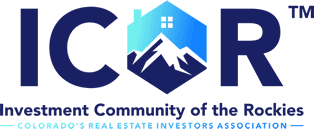
Big Shifts in Washington: Policy Uncertainty and Housing
The rapid policy changes in the first month of President Trump’s second term have created uncertainty for investors and the housing industry. Some policies, like new tariffs, have been announced but then quickly reversed, leaving industries scrambling to adjust. For example, the National Association of Home Builders (NAHB) has already formally voiced concerns about potential cost increases from tariffs.
These actions signal a major change in government policy—one of the 4 key factors driving demographic change, something we highlighted in our book Big Shifts Ahead nearly a decade ago.
Economic writer and Bloomberg contributor Kyla Scanlon, who spoke at our New York Housing Outlook in November 2023, is known for her ability to explain complex ideas in simple terms. She recently described the new US economic strategy as “FAFOnomics,” short for F*** Around and Find Out Economics. Scanlon argues that this approach uses economic unpredictability to influence America’s global economic relationships, and we recommend that you read her piece.
How will these policy changes affect the housing industry?
Below, we break down implications and recommended actions for homebuilders, building products manufacturers, and residential real estate investors.
Homebuilders
Implications
Increased material costs. The impact of tariffs on materials like steel, aluminum, glass, and lumber could translate to higher construction costs, making homes less affordable and potentially leading to reduced construction.
Higher borrowing costs. If the bond market demands higher yields due to economic uncertainty, borrowing costs for builders and developers will increase, impacting project financing and profitability.
Reduced demand. Higher home prices, driven by increased material and borrowing costs, can dampen demand, leading to slower sales and potential inventory build-up.
Supply chain disruptions. Trade disputes even without tariffs can disrupt supply chains, making it difficult to source necessary materials and delaying projects.
Recommended actions
Educate policymakers. Seek out ways to engage with officials and educate them on the impacts of proposed policy shifts.
Diversify supply chains. Find alternative sources for materials to reduce reliance on countries subject to tariffs.
Improve efficiency. Streamline construction processes and adopt innovative technologies to mitigate rising costs.
Communicate with buyers. Be transparent with potential buyers about the factors driving up home prices.
Building Products Companies
Implications
Increased input costs. Building products companies that rely on imported raw materials or components will face higher input costs due to tariffs.
Reduced competitiveness. If tariffs drive up costs for domestic manufacturers more than for their foreign competitors, they may lose market share.
Export challenges. Retaliatory tariffs from other countries could make it more difficult for US building products companies to export their goods.
Demand volatility. Economic uncertainty and potential slowdowns in the housing market can lead to volatile demand for building products.
Recommended actions
Assess supply chain vulnerabilities. Identify areas where tariffs could significantly impact input costs and explore alternative sourcing options.
Invest in automation. Increase automation to improve efficiency and reduce labor costs, offsetting some of the impact of higher material prices.
Focus on innovation. Develop new products and technologies that offer cost savings or performance advantages to maintain competitiveness.
Explore export opportunities. Diversify into new markets to reduce reliance on the US market, particularly in regions less affected by trade disputes.
Residential real estate investors
Implications
Increased housing costs. Tariffs and economic uncertainty can lead to higher home prices, making it more expensive to acquire investment properties.
Higher interest rates. Rising interest rates, driven by inflation or bond market reactions to economic uncertainty, can increase borrowing costs and yield requirements for investors.
Rental market impacts. While higher housing costs might increase demand for rentals, economic instability or immigration policy changes could reduce demand.
Property value uncertainty. Economic uncertainty creates unpredictability in property values, making it harder to assess investment risks and potential returns.
Recommended actions
Carefully analyze markets. Use our market-level coverage to focus on markets with strong fundamentals, such as job growth and population increases, to mitigate economic uncertainty risks.
Factor in higher costs. Account for potential increases in property taxes, insurance, and maintenance costs due to inflation and supply chain disruptions.
Consider fixed-rate debt. Securing a fixed interest rate today can help protect against the risk of future borrowing cost increases.
Diversify investments. Spread investments across different property types and locations to reduce overall risk.
This article is provided through John Burns Research & Consulting. Each month, they analyze economic and market trends in our client-exclusive webinar, US Housing Analysis and Forecast report, and sector-specific coverage of for-sale housing, building products, single-family rentals, and rental communities. Visit jbrec.com/ for more information.
